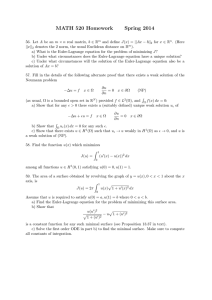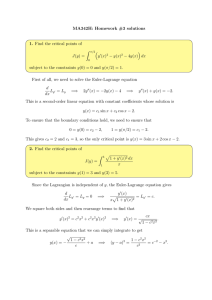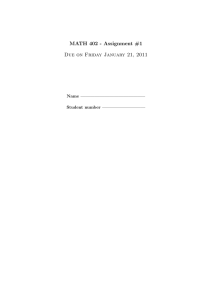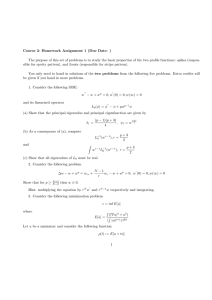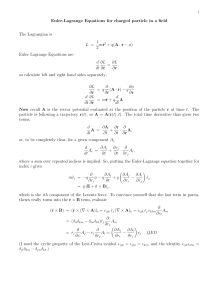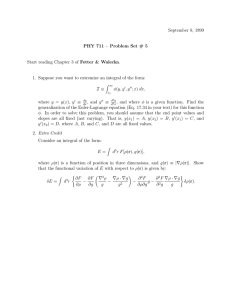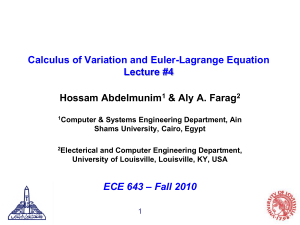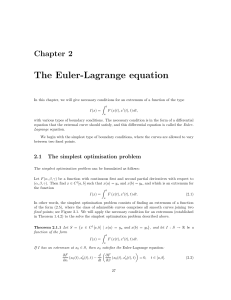Problem set 2 Math 207B, Winter 2016 Due: Fri, Jan. 29 1. A particle
advertisement
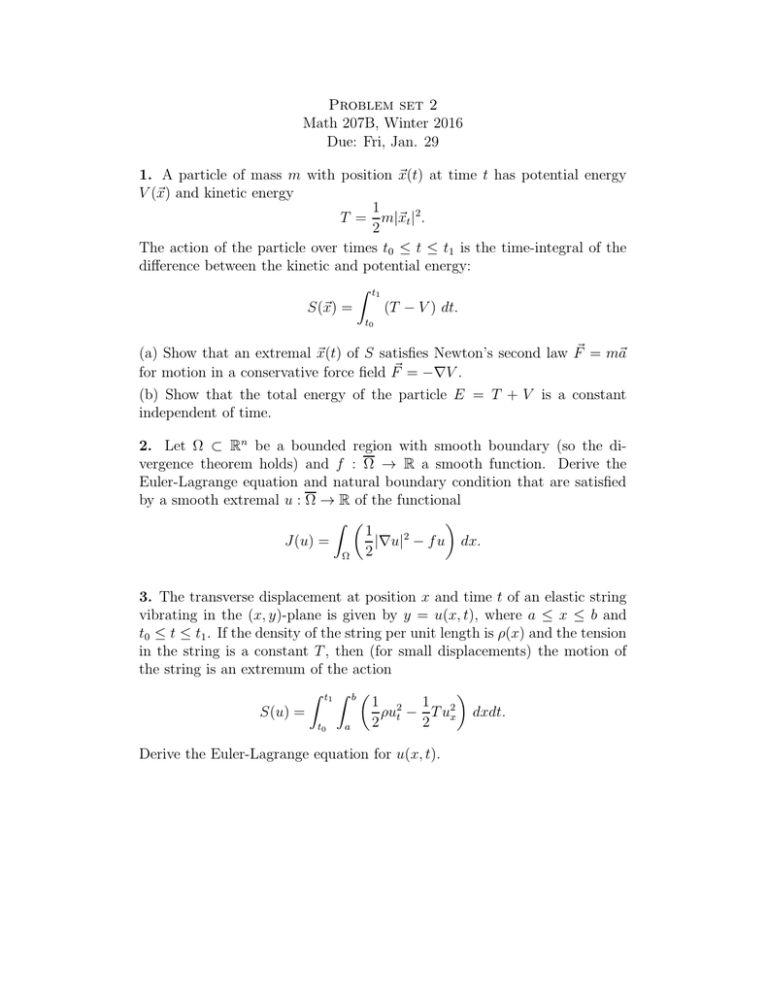
Problem set 2
Math 207B, Winter 2016
Due: Fri, Jan. 29
1. A particle of mass m with position ~x(t) at time t has potential energy
V (~x) and kinetic energy
1
T = m|~xt |2 .
2
The action of the particle over times t0 ≤ t ≤ t1 is the time-integral of the
difference between the kinetic and potential energy:
Z t1
(T − V ) dt.
S(~x) =
t0
(a) Show that an extremal ~x(t) of S satisfies Newton’s second law F~ = m~a
for motion in a conservative force field F~ = −∇V .
(b) Show that the total energy of the particle E = T + V is a constant
independent of time.
2. Let Ω ⊂ Rn be a bounded region with smooth boundary (so the divergence theorem holds) and f : Ω → R a smooth function. Derive the
Euler-Lagrange equation and natural boundary condition that are satisfied
by a smooth extremal u : Ω → R of the functional
Z 1
2
J(u) =
|∇u| − f u dx.
2
Ω
3. The transverse displacement at position x and time t of an elastic string
vibrating in the (x, y)-plane is given by y = u(x, t), where a ≤ x ≤ b and
t0 ≤ t ≤ t1 . If the density of the string per unit length is ρ(x) and the tension
in the string is a constant T , then (for small displacements) the motion of
the string is an extremum of the action
Z t1 Z b 1 2 1 2
S(u) =
ρu − T u
dxdt.
2 t 2 x
a
t0
Derive the Euler-Lagrange equation for u(x, t).
4. The (n-dimensional) area of a surface y = u(x) over a region Ω ⊂ Rn is
given by
Z p
J(u) =
1 + |∇u|2 dx.
Ω
Find the Euler-Lagrange equation (called the minimal surface equation) that
is satisfied by a smooth extremum of this functional.
5. Let X = {u ∈ C 1 ([−1, 1]) : u(−1) = −1, u(1) = 1} , where C 1 ([a, b]) denotes the space of continuously differentiable functions on [a, b]. Define
J : X → R by
Z
1
x4 (u′ )2 dx.
J(u) =
−1
(a) Show that
inf J(u) = 0,
u∈X
but J(u) > 0 for every u ∈ X (so J does not attain its infimum on X).
(b) What happens when you try to solve the Euler-Lagrange equation for
extremals of J?
